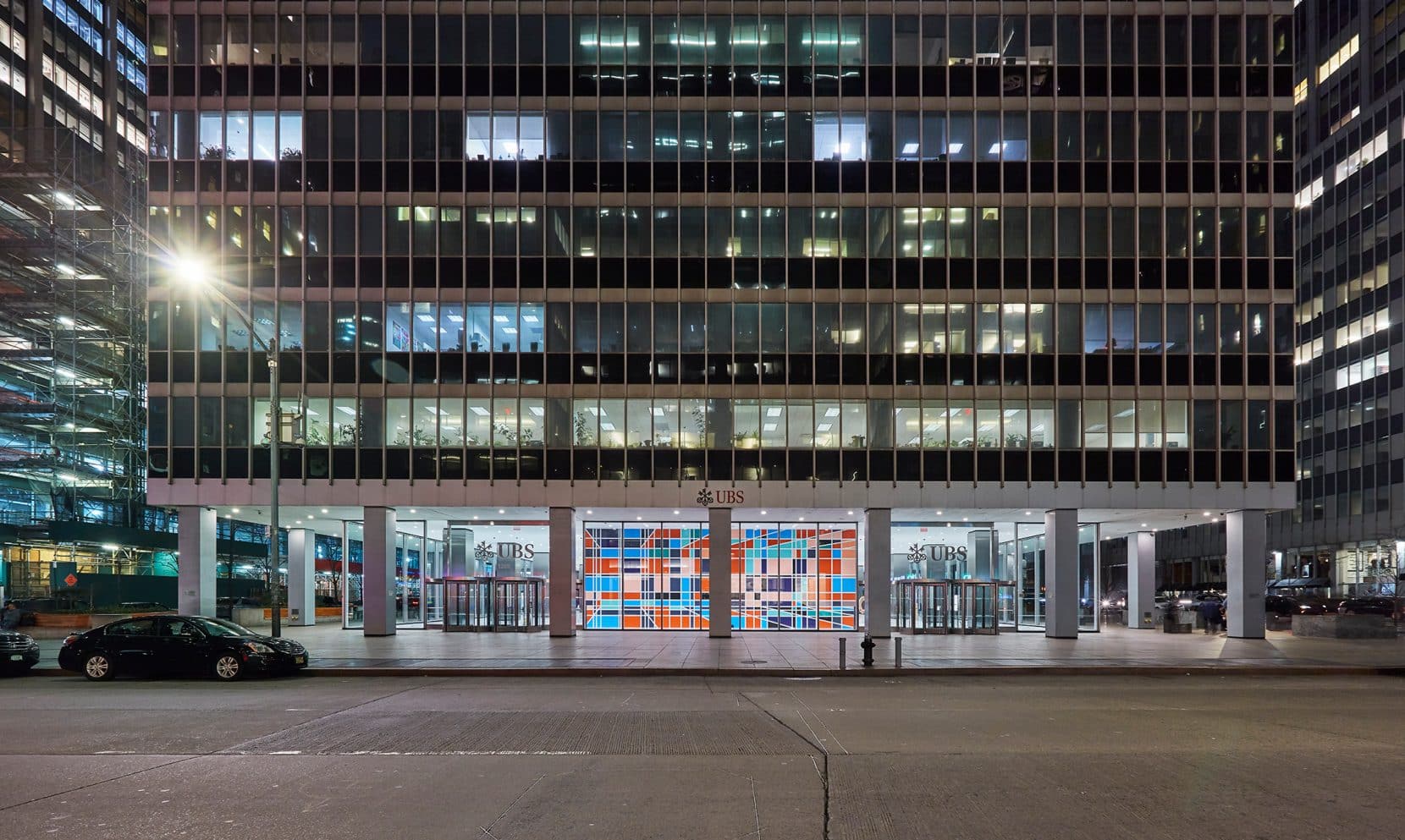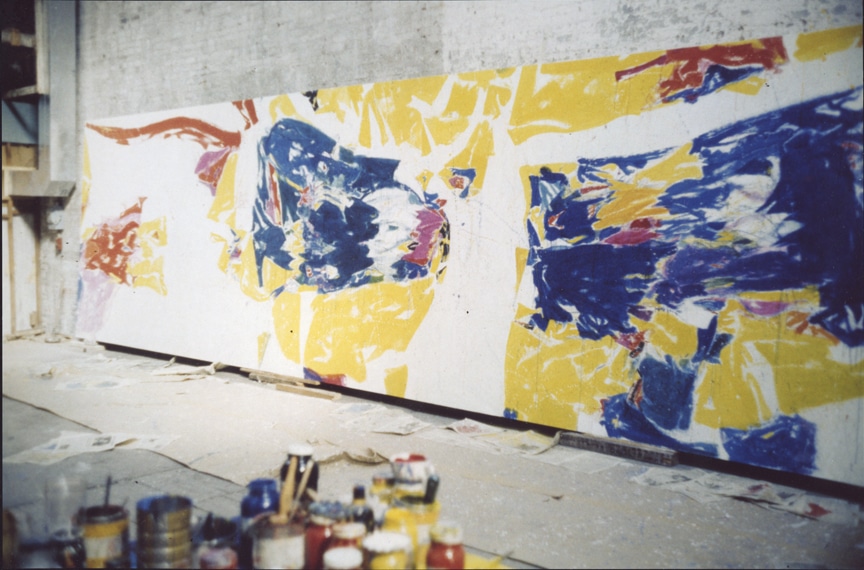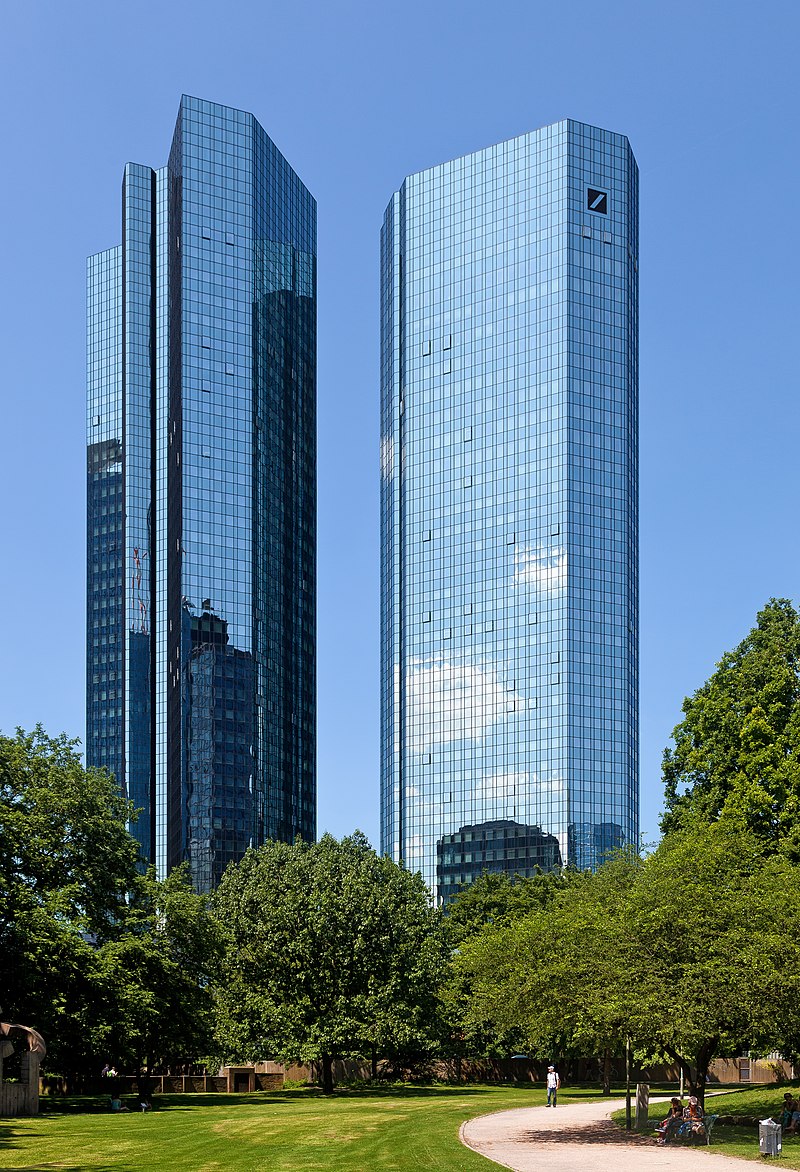When we covered The Most Value Art Collections in the World, we were looking at individuals who have amassed meaningful art collections, but what about corporate art collections?
Companies big and small want to purchase art to make their offices welcoming to guests and friendly to employees, but many corporations hold art as an investment in the same they have investments in stocks, bonds, and real estate.
In this article, we’ll look at some of the largest corporate art collections in the art business and where to see them.
You may also be interested in finding out more in our “Who Is an Art Collector?” article. If you’re thinking about becoming an art collector yourself, be sure to read our Art Collector’s Guide.
If you want a more comprehensive look at this topic, there’s even a book: International Directory of Corporate Art Collections: A Global Tour of Art in the Workplace by Shirley Reiff Howarth.
UBS Corporate Art Collection
The mission of the UBS Art Collection is to acquire and maintain works of art in the communities where we do business, buying on the primary market to directly support artists and galleries. The Collection is part of our cultural history and contributes to the innovative thinking that shapes UBS.
UBS, a Switzerland-based investment bank, makes a bold mission statement. The collection numbers over 30,000 pieces, and the firm actively finds ways to make the pieces available to the public, via the UBS Art Gallery in New York and by lending to museums and other institutions for public exhibition.
Artists in the collection include Sarah Morris, Frank Stella, Fred Eversley, Howard Hodgkin, and Carlos Cruz-Diez.
The current show running in New York is called “Reimagining: New Perspectives” and ends January 20th, 2023.

JPMorgan Chase Corporate Art Collection
Perhaps the company that started the trend of accumulating corporate art collections, CEO David Rockefeller put what was known in the 1950s as Chase Manhattan Bank on the path of purchasing art, primarily for display at corporate headquarters.
In that era, “selection of artwork was very much reliant on the desires of the CEO.” In the present, JPMorgan Chase discusses their collection, known as “Art at Work,” as reflective of current “principles and priorities: diversity, innovation, technology, sustainability, creativity, and excellence.” See the bank’s summary of the collection with a few images of pieces.
Learn more about current Chief Curator Charlotte Eyerman and her role in growing the collection which includes artists Ed Ruscha, Christopher Wool, Cindy Sherman, Glenn Ligon, Robert Smithson, Cy Twombly, and Nancy Spero among others.
If you want to see the collection, you’ll want to check for the next museum exhibition or you may be able to sign up for a guided tour when they are offered.

Deutsche Bank Corporate Art Collection
Widely regarded as the world’s largest corporate art collection, Deutsche Bank has a well-developed portion of its website dedicated to its art collection, with special emphasis on holdings at corporate headquarters in Frankfurt, New York, and London.
The bank describes “The Concept” for their art collecting activities: “Art spawns new ideas for shaping our future. It questions, inspires people, opens up new perspectives, and thus enables them to embrace unusual and innovative solutions.”
Just in the towers, Deutsche Bank is holding ~1,800 works. The floors of the towers are divided into regions. One building holds Asia/Pacific, The Americas, and Middle East/Africa, while the other holds Germany on its own and a separate Europe section.
Beyond Deutsche Bank’s continental headquarters, they boast of having art on display in over 600 locations.
If you want to see some of their collection, Deutsche Bank is relatively friendly. They maintain their own museum in Berlin, the PalaisPopulaire: “…our museum offers a wide-ranging program that brings together diverse aspects of contemporary culture. This includes exhibitions from the Deutsche Bank Collection and presentations of the “Artist of the Year” program. The shows stem from international cooperation partners or private collections.”
You can also arrange guided tours within their corporate offices. They even produce comprehensive brochures for each location such as art on display at New York’s Deutsche Bank Center.
Fidelity Investments Corporate Art Collection
Back in 1980, Edward C. Johnson, III hired Fidelity’s first in-house art curator. The focus of the collection which now numbers over 12,000 pieces is contemporary artists in markets in which Fidelity has a presence.
The firm’s current curator, Patricia Dellorfano, recently commented that “The firm does not aim to acquire pieces of art as investment opportunities. The collection is valued solely for its contribution to the Fidelity experience,” in a recent interview with Northeastern University.
With emphasis on purchasing from local communities, Fidelity also attempts to bridge the gap between employees and artists. Dellorfano continues, “I feel really passionately that we also offer deeper tools – whether it’s an artist coming in talking about their work or whether it’s someone coming in and offering a painting lab.”
Artists in the collection include Raul Gonalez, III, Baseera Khan, Augustus Saint-Gaudens, Hassan Hajjaj, and many more on display at corporate headquarters in Boston, USA, and in other global locations.
Conclusion
As you likely concluded, these corporations are easily able to continue to grow their art collections. Luckily, beyond the value imparted to their employees, the trend is for corporate art collectors to make pieces available for public viewing. They’re also playing a role in the grassroots/local art scene in many cases by purchasing artists who are not “collectible” (yet). When an artist can say they have a piece in one of the collections above or other those of other large corporations, it certainly helps with their credibility and the future growth of their art business.


